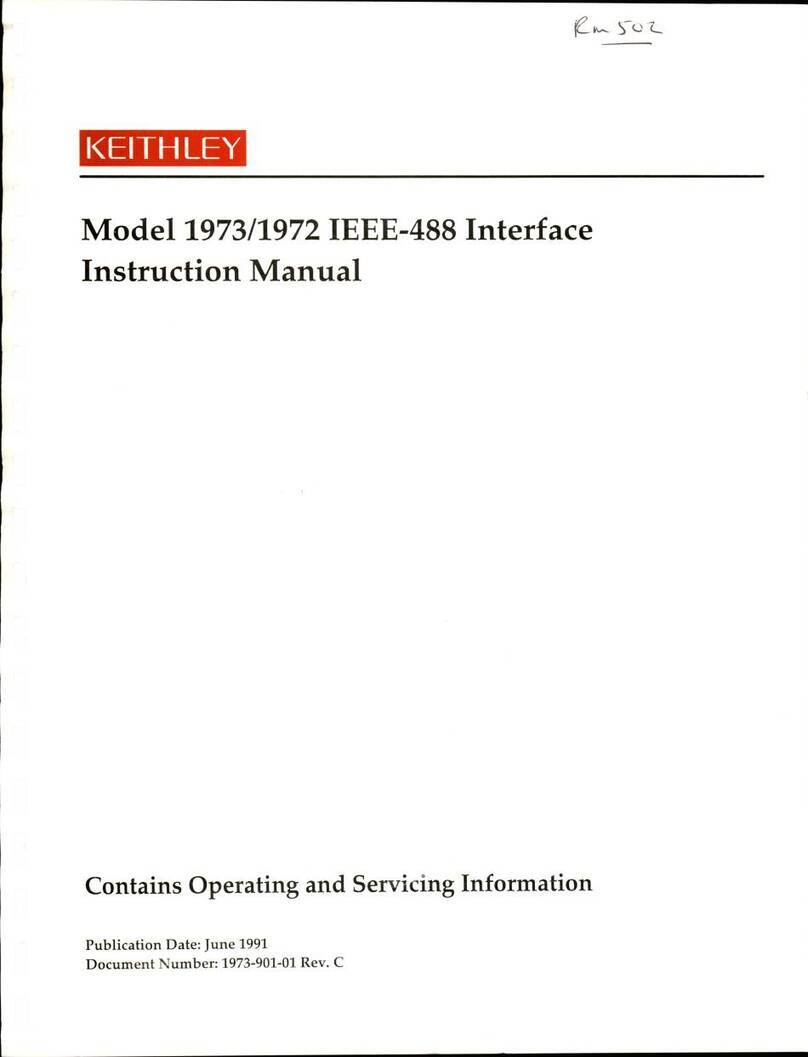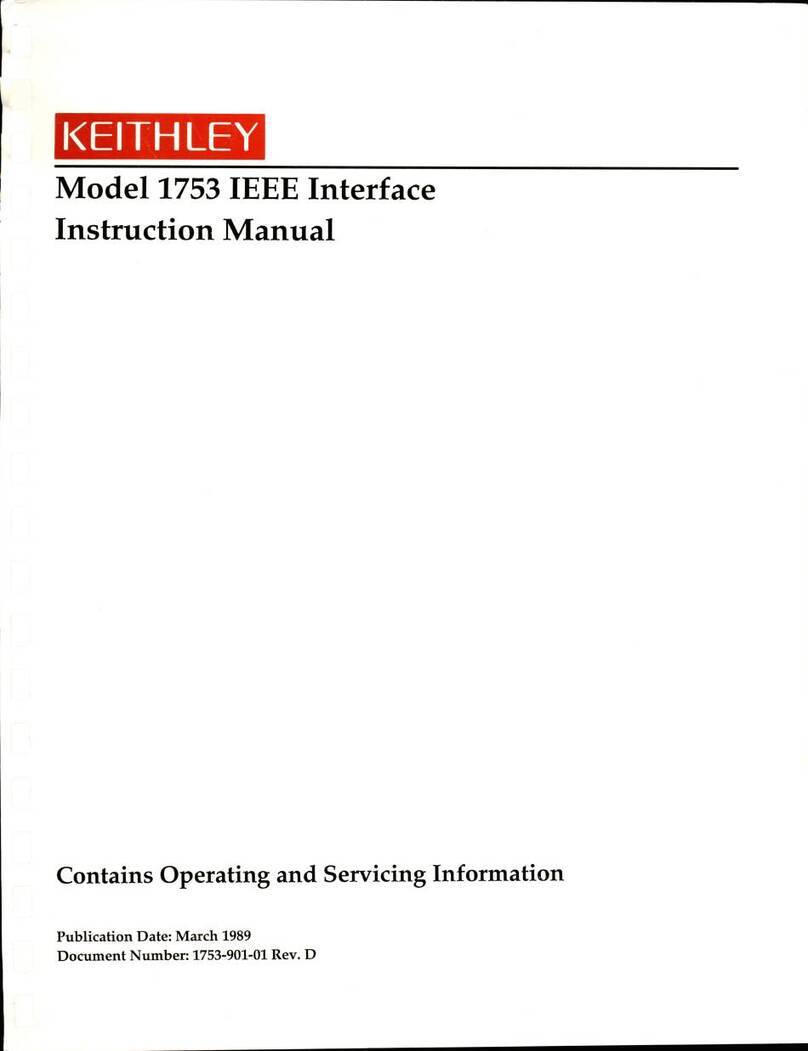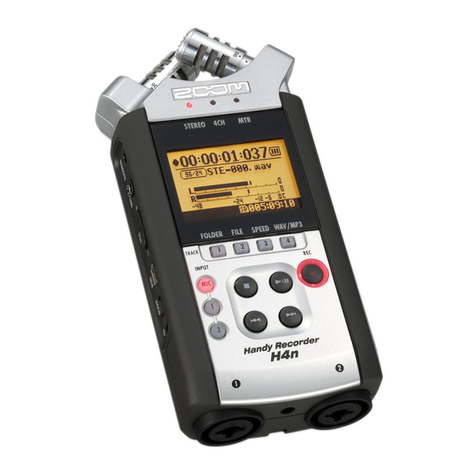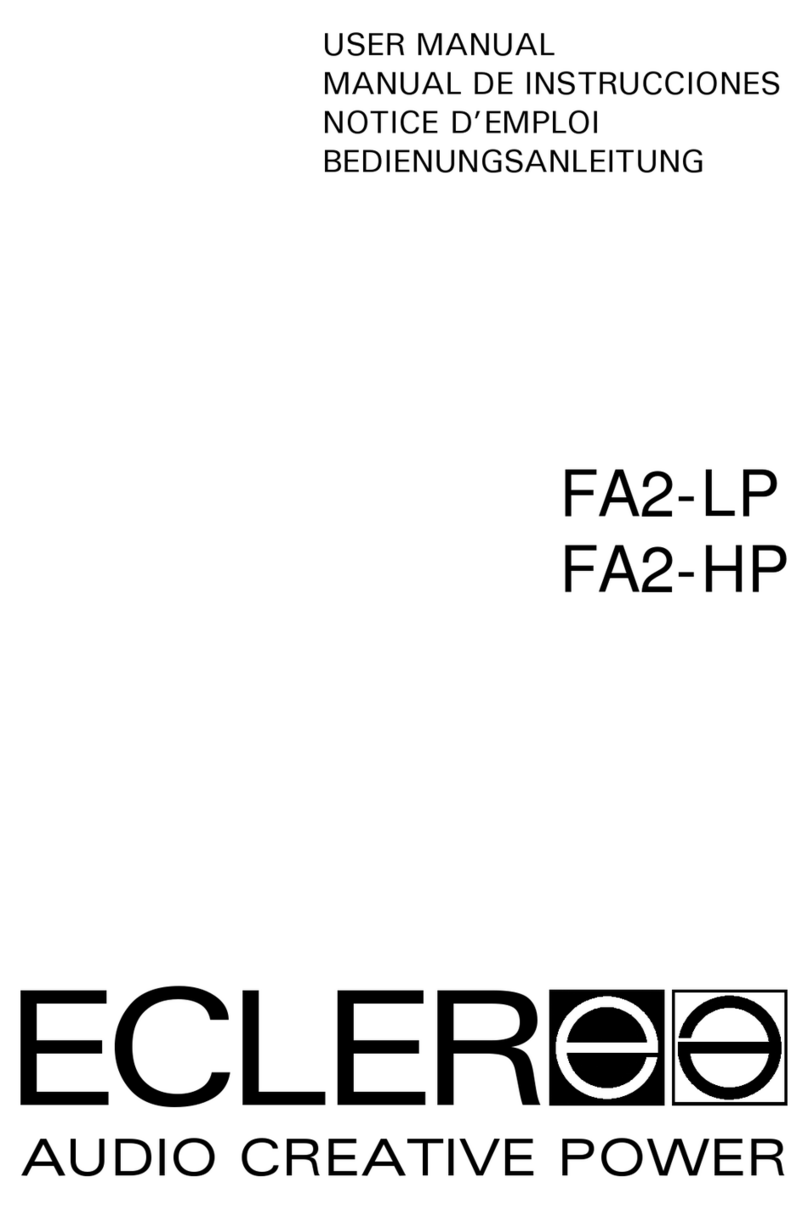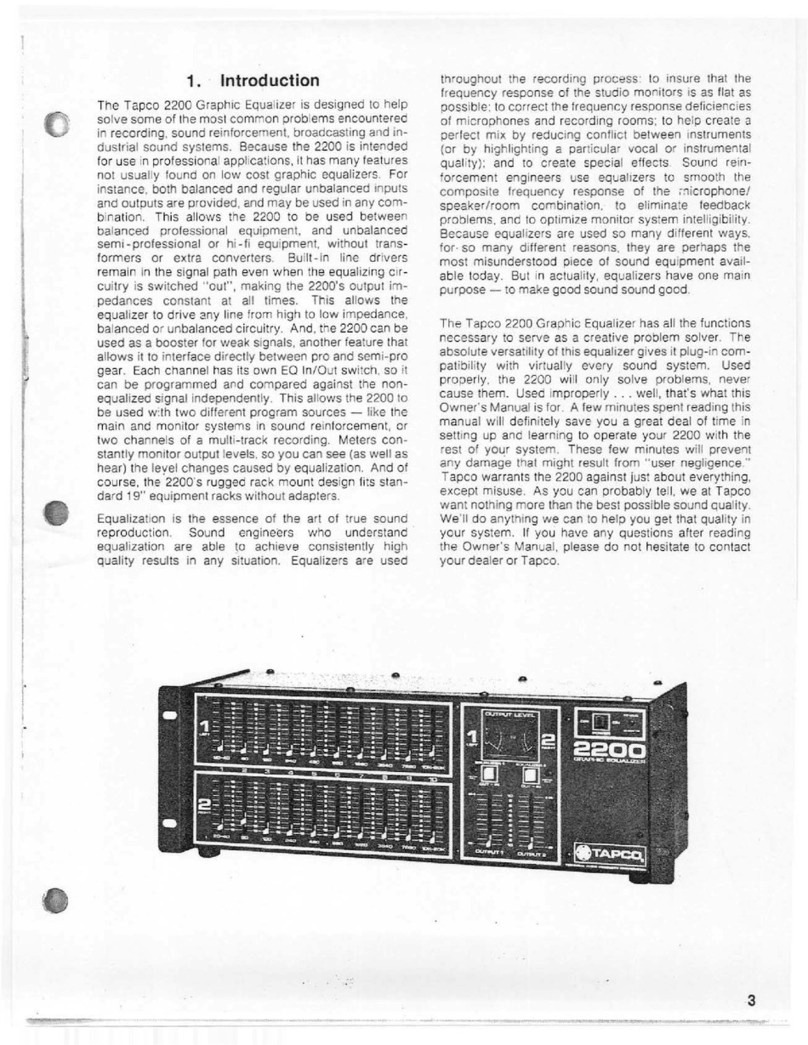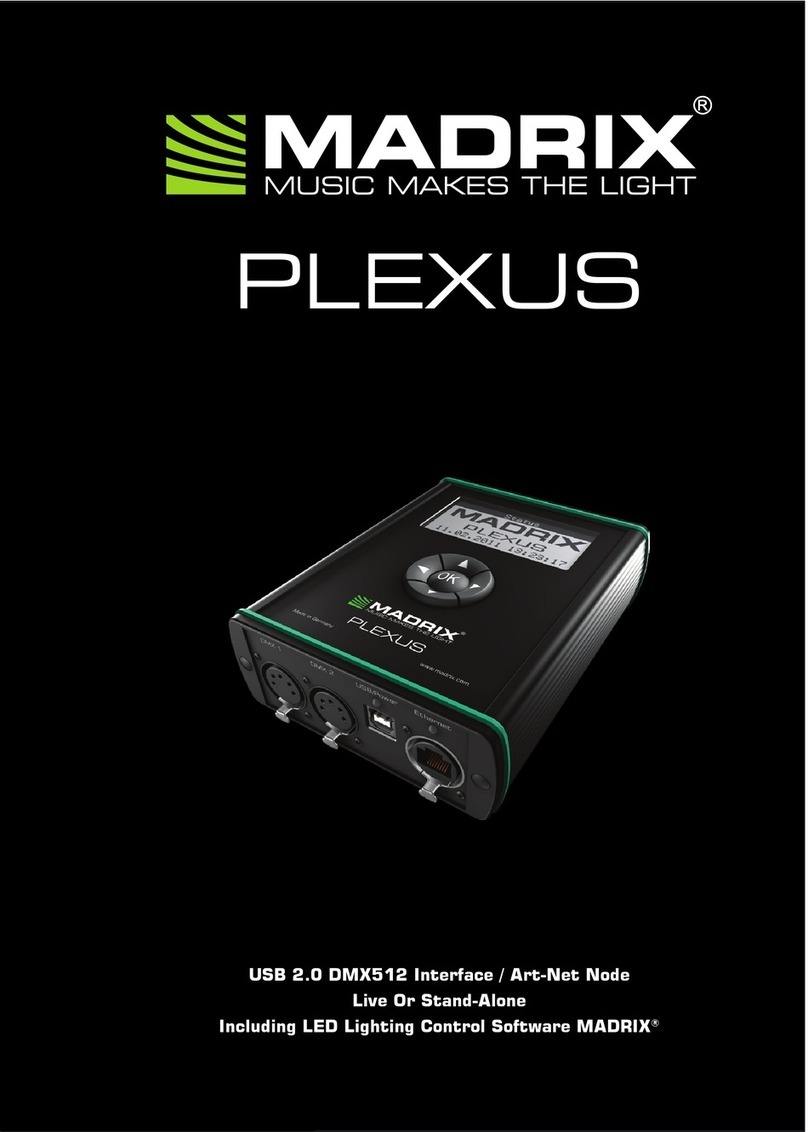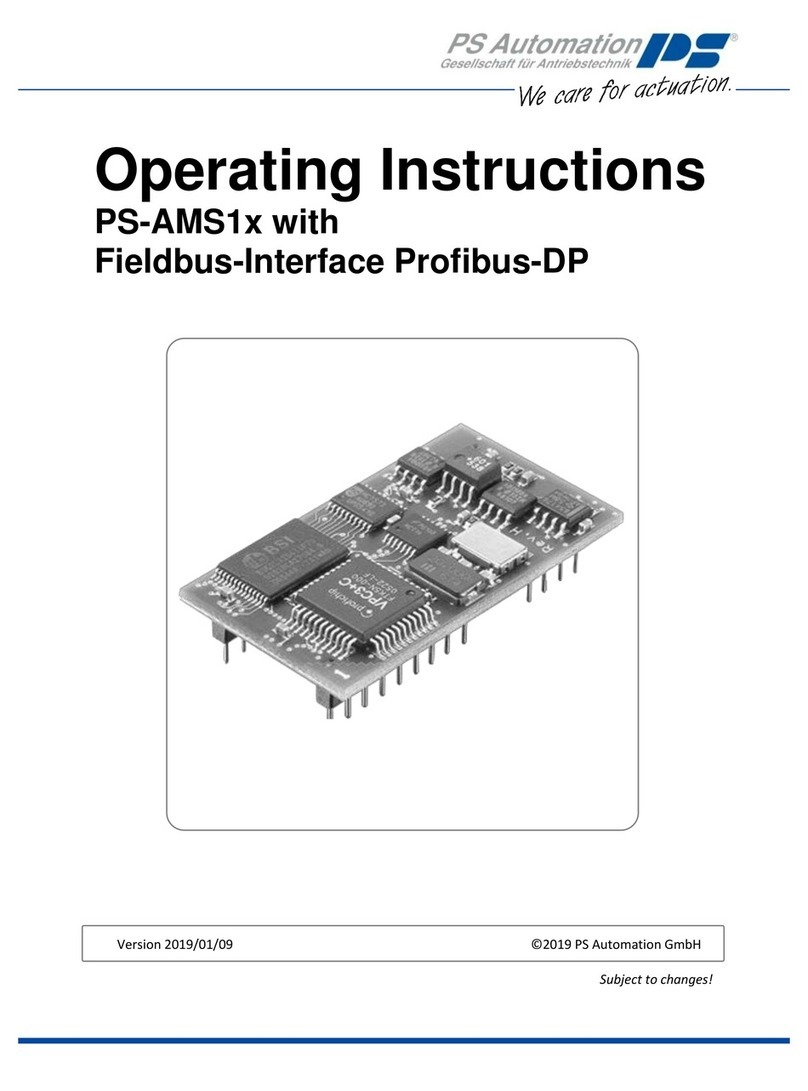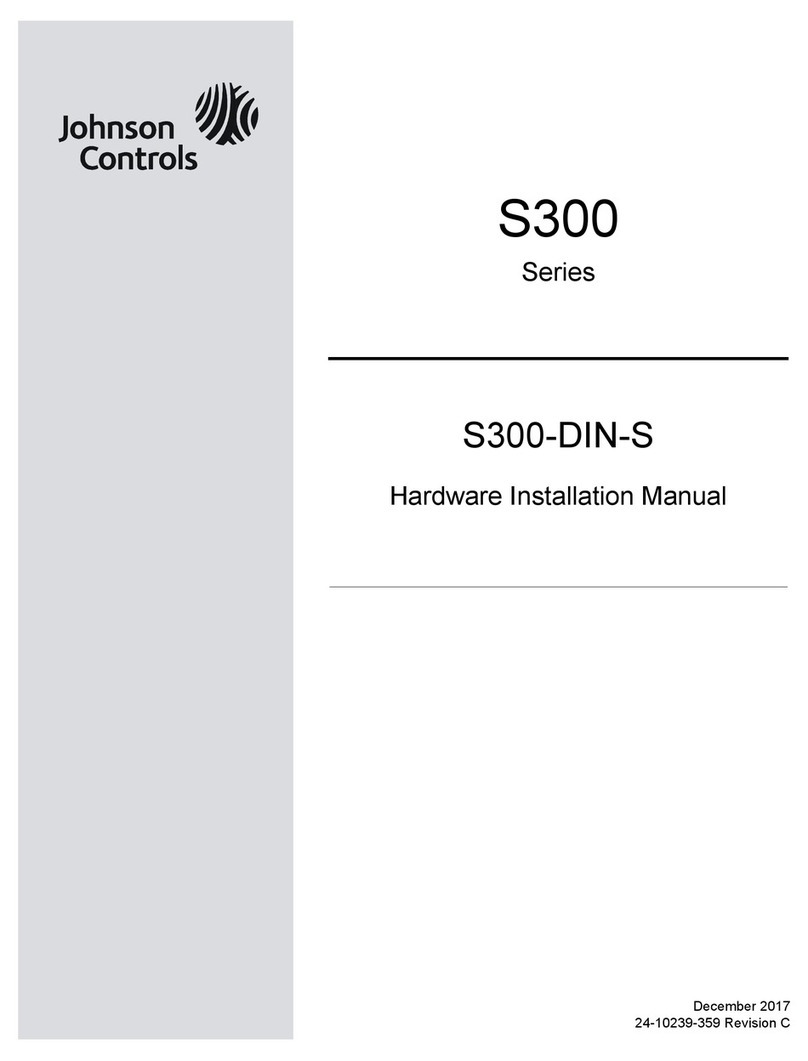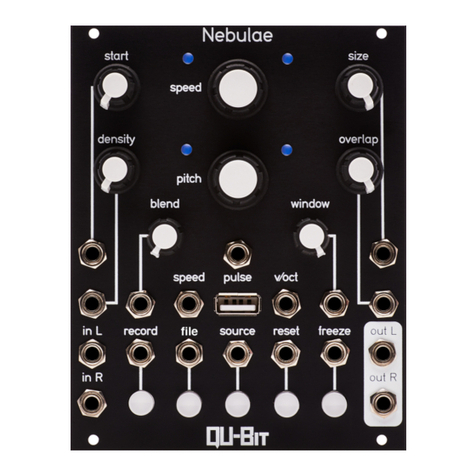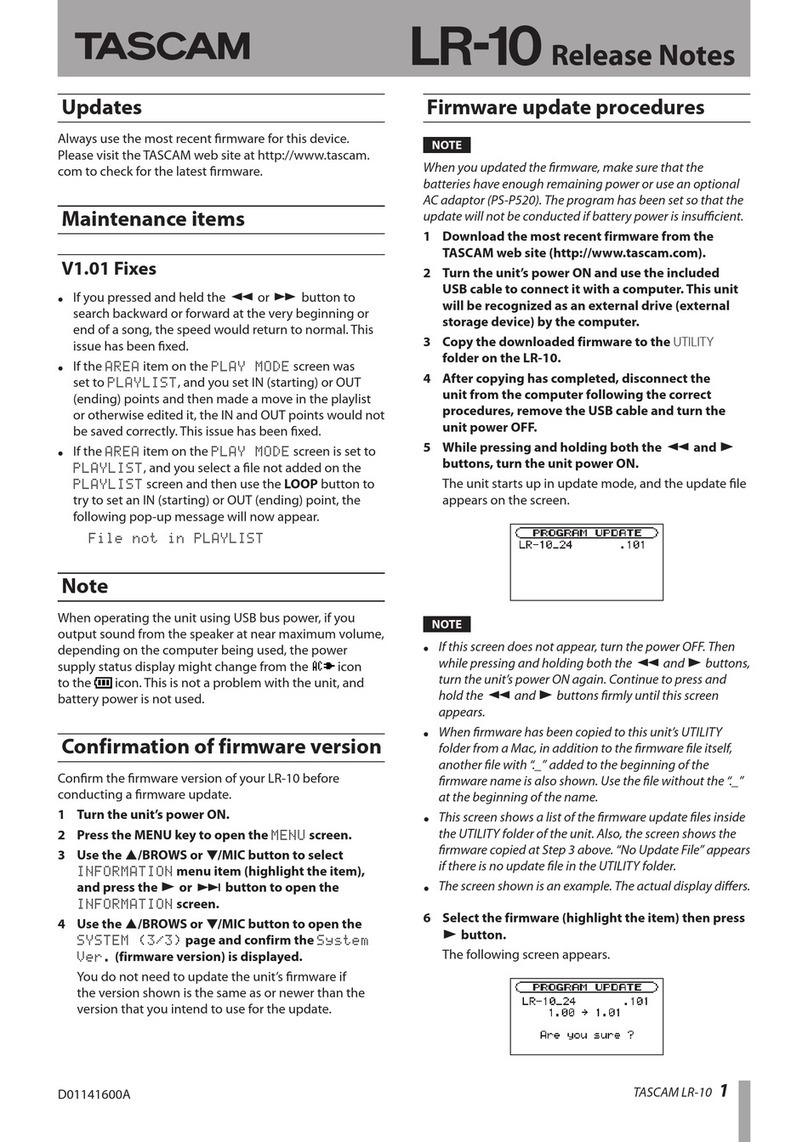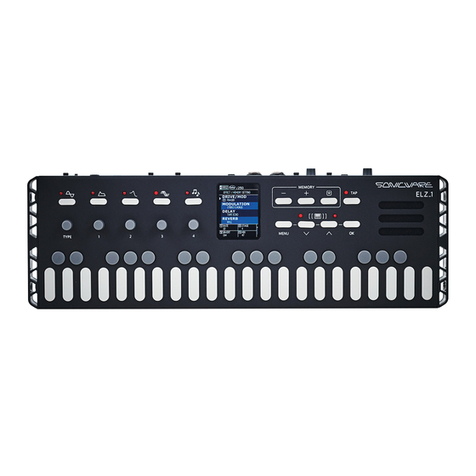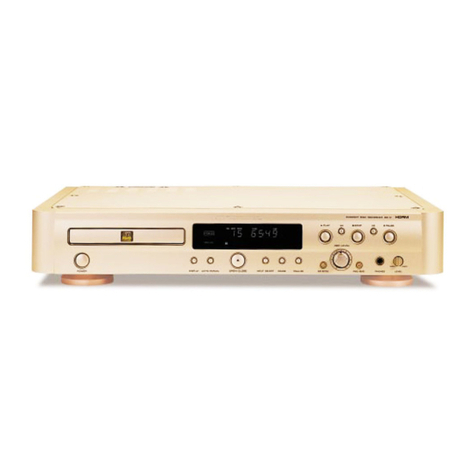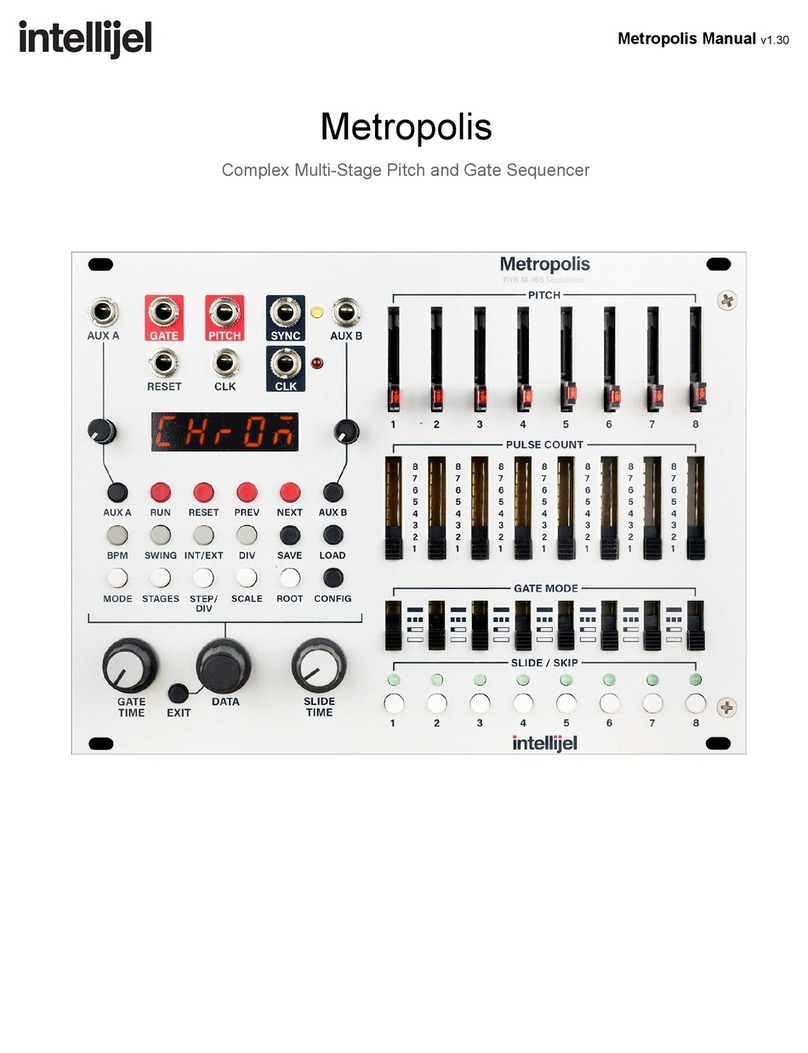Keithley 4853 User manual

KEITH
LEY
Model
4853
IEEE-488
Interface
Instruction
Manual
4
z
Vf^
''
5
/
Contains
Operating
and
Servicing
Information
Publication
Date:
October
1987
Document
Number:
4853-901-01
Rev.
C

WARRANTY
Keithley
Instruments,
Inc.
warrants
this
product
to
be
free
from
defects
in
material
and
workmanship
for
a
period
of
1
year
from
date
of
shipment.
Keithley
Instruments,
Inc.
warrants
the
following
items
for
90
days
from
the
date
of
shipment:
probes,
cables,
rechargeable
batteries,
diskettes,
and
documentation.
During
the
warranty
period,
we
will,
at
our
option,
either
repair
or
replace
any
product
that
proves
to
be
de
fective.
To
exercise
this
warranty,
write
or
caU
your
local
Keithley
representative,
or
contact
Keithley
headquarters
in
Cleveland,
Ohio.
You
will
be
given
prompt
assistance
and
return
instructions.
Send
the
product,
transporta
tion
prepaid,
to
the
indicated
service
facility.
Repairs
will
be
made
and
the
product
returned,
transportation
prepaid.
Repaired
or
replaced
products
are
warranted
for
the
balance
of
the
original
warranty
period,
or
at
least
90
days.
LIMITATION
OF
WARRANTY
This
warranty
does
not
apply
to
defects
resulting
from
product
modification
without
Keithley's
express
writ
ten
consent,
or
misuse
of
any
product
or
part.
This
warranty
also
does
not
apply
to
fuses,
software,
non-re-
chargeable
batteries,
damage
from
battery
leakage,
or
problems
arising
from
normal
wear
or
failure
to
follow
instructions.
THIS
WARRANTY
IS
IN
LIEU
OF
ALL
OTHER
WARRANTIES,
EXPRESSED
OR
IMPLIED,
INCLUDING
ANY
IMPLIED
WARRANTY
OE
MERCHANTABILITY
OR
HTNESS
FOR
A
PARTICULAR
USE.
THE
REMEDIES
PROVIDED
HEREIN
ARE
BUYER'S
SOLE
AND
EXCLUSIVE
REMEDIES.
NEITHER
KEITHLEY
INSTRUMENTS,
INC.
NOR
ANY
OE
ITS
EMPLOYEES
SHALL
BE
LIABLE
FOR
ANY
DIRECT,
INDIRECT,
SPECIAL,
INCIDENTAL
OR
CONSEQUENTIAL
DAMAGES
ARISING
OUT
OF
THE
USE
OF
ITS
INSTRUMENTS
AND
SOFTWARE
EVEN
IF
KEITHLEY
INSTRUMENTS,
INC.,
HAS
BEEN
ADVISED
IN
ADVANCE
OF
THE
POSSIBILITY
OF
SUCH
DAMAGES.
SUCH
EXCLUDED
DAM
AGES
SHALL
INCLUDE,
BUT
ARE
NOT
LIMITED
TO:
COSTS
OE
REMOVAL
AND
INSTALLATION,
LOSSES
SUSTAINED
AS
THE
RESULT
OE
INJURY
TO
ANY
PERSON,
OR
DAMAGE
TO
PROPERTY.
KEITHLEY
INSTRUMENTS
Instruments
Division,
Keithley
Instruments,
Inc.
•
28775
Aurora
Road
•
Cleveland,
Ohio
44139
•
(216)
248-0400
•
Fax:
248-6168
WEST
GERMANY:
Keithley
Instruments
GmbH
•
Landsbergerstr.
65
•
D-8034
Germering
•
089-849307-0
•
Telex:
52-12160
•
Fax:
089-84930759
GREAT
BRITAIN:
Keithley
Instruments,
Ltd.
•
The
Minster
•
58,
Portman
Road
•
Reading,
Berkshire
RG
3
lEA
•
Oil
44
734
575
666
•
Fax:
Oil
44
734
596
469
FRANCE:
Keithley
Instruments
SARL
•
3
Allee
des
Garays
•
B.P.
60
•
91124
Palaiseau/Z.I.
•
1-6-0115
155
•
Telex:
600
933
•
Fax:
1-6-0117726
NETHERLANDS:
Keithley
Instruments
BV
•
Aveiingen
West
49
•
4202
MS
Gorinchem
•
P.O.
Box
559
•
4200
AN
Gorinchem
•
01830-35333
•
Telex:
24
684
•
Fax:
01830-30821
SWITZERLAND:
Keithley
Instruments
SA
•
Kriesbachstr.
4
•
8600
Dubendorf
•
01-821-9444
•
Telex:
828
472
•
Fax:
0222-315366
AUSTRIA:
Keithley
Instruments
GesmbH
•
Rosenhugelstrasse
12
•
A-1120
Vienna
•
(0222)
84
65
48
•
Telex:
131677
•
Fax:
(0222)
8403597
ITALY:
Keithley
Instruments
SRL
•
Viale S.
Gimignano
4/A
•
20146
Milano
•
02-4120360
or
02-4156540
•
Fax:
02-4121249

Instruction
Manual
Model
4853
IEEE
Interface
©
1984
Keithley
Instruments,
Inc.
Cleveland,
Ohio,
U.S.A.
Document
Number
4853-901-01

SPECIFICATIONS
Maximum
Common
Mode
Volt-Hertz
Product:
1
x
10^
Output
Data
Format:
MANTISSA
4'/:
DIGITS
EXPONENT
PREFIX
NDCA
+
1.2345
E-9
DCA
=
DC
CURRENT
DCL
=
LOGARITHM
(BASE
10)
READING
•N
=
NORMAL
0
=
OVERFLOW
Z
=
RELATIVE
C
=
ZERO
CHECK
Trigger
to
First
Byte
Out:
950ms
typical
T1
mode.
550ms
typical
T3
mode.
400ms
typical
T5
mode.
Address
Modes:
Talk
Only
Mode
Addressable
Mode
IEEE-488
BUS
IMPLEMENTATION
Muitiiine
Commands:
DCL,
SDC,
GET,
GTL,
UNT,
UNL,
SPE,
SPD.
Uniiine
Commands:
IFC,
REN,
EOl,
SRQ,
ATN.
Interface
Functions:
SHI,
AH1,
T5,
TEO,
L4,
LEO,
SRI,
RL2,
PPO,
DC1,
DTI,
CO,
El.
Programmabie
Parameters:
Zero
Check,
Range,
REL,
LOG,
EOl,
Trigger,
Calibration,
SRQ,
Status,
Output
Format,
Terminator.
DEVICE-DEPENDENT
COMMANDS:
Range:
RO
=
Auto
R1
R2
R3
2nA
20nA
200nA
R4
=
2fiA
R5
=
20/^A
R6
=
200,»A
R7
=
2mA
Zero
Check:
CO
=
Off
C1
=
On
LOG:
DO
=
LOG
Off
D1
=
LOG
On
Relative:
ZO
=
REL
Off
Z1
=
REL
On
Trigger:
TO
=
Continuous
on
talk
T1
=
One-shot
on
talk
T2
=
Continuous
on
GET
T3
=
One-shot
on
GET
T4
=
Continuous
on
X
T5
=
One-shot
on
X
Execute:
X
=
Execute
other
device-dependent
commands.
EOl:
KO
=
EOl
Enable
K1
=
EOl
Disable
Status
Word:
UO
=
Output
Status
Word
Data
Format:
GO
=
Readings
and
status
word
with
prefix.
G1
=
Readings
and
status
word
without
prefix.
SRQ:
MO
=
Clear
SRQ
Data
Mask
Ml
=
Reading
Overflow
M8
=
Reading
Done
M9
=
Reading
Done
or
Reading
Overflow
M16
=
Busy
M17
=
Busy
or
Reading
Overflow
M24
=
Busy
or
Reading
Done
M25
=
Busy,
Reading
Done
or
Reading
Overflow
M32
=
Clear
SRQ
Error
Mask
M33
=
IDDCO
M34
=
IDDC
M35
=
IDDC
or
IDDCO
M36
=
Not
In
Remote
M37
=
Not
In
Remote
or
IDDCO
M38
=
Not
In
Remote
or
IDDC
M39
=
Not
In
Remote,
IDDC
or
IDDCO
Digital
Calibration:
V
±
n.nnnnE
±
nn
represents
calibration
value
Store:
LO
=
Store
Calibration
Constants
Terminator:
Y(ASCII)
=
ASCII
character
Y(LF)
=
CR
LF
Y(CR)
=
LF
CR
Y(DEL)
=
None
Specifications
subject
to
change
without
notice.

TABLE
OF
CONTENTS
Para.
Title
Page
SECTION
1-GENERAL
iNFCRMATIGN
1.1
Introduction
1-1
1.2
Model
4853
FEATURES
1-1
1.3
Warranty
Information
1-1
1.4
Manual
Addenda
1-1
1.5
Safety
Symbols
and
Terms
1-1
1.6
Specifications
1-1
1.7
Unpacking
and
Inspection
1-1
1.8
Preparation
for
Use
T1
SECTION
2-AN
OVERVIEW
OF
THE
IEEE-488
BUS
2.1
Introduction
2-1
2.2
Bus
Description
2-1
2.3
IEEE-488
Bus
Lines
2-1
2.3.1
Bus
Management
Lines
2-1
2.3.2
Handshake
Lines
2-2
2.3.3
Data
Lines
2-3
2.4
Bus
Commands
2-3
2.4.1
Uniline
Commands
2-3
2.4.2
Universal
Commands
Multiline
2-4
2.4.3
Addressed
Commands
2-4
2.4.4
Unaddressed
Commands
2-4
2.4.5
Device-Dependent
Commands
2-4
2.5
Command
Codes
2-4
2.6
Command
Sequence
2-5
2.6.1
Addressed
Command
Sequence
2-5
2.6.2
Universal
Command
Sequence
2-5
2.6.3
Device-Dependent
Command
Sequence
2-5
SECTION
3-OPERATION
3.1
Introduction
3-1
3.2
Hardware
Considerations
3-1
3.2.1
Typical
Controlled
Systems
3-1
3.2.2
Bus
Connections
3-1
3.2.3
Addressable
Mode
Selection
3-3
3.2.4
Primary
Address
Selection
3-3
3.3
Software
Assembly
3-4
3.3.1
Controlled
Interface
Routines
3-4
3.3.2
HP-85
BASIC
Statements
3-4
3.3.3
Interface
Function
Codes
3-5
3.3.4
Model
485
Interface
Commands
3-5
3.4
General
Bus
Command
Programming
3-6
3.4.1
REN
(Remote
Enable)
3-6
3.4.2
IFC
(Interface
Clear)
3-7
3.4.3
GTL
(Go
To
Local)
3-7
3.4.4
DCL
(Device
Clear)
3-7
3.4.5
SDC
(Selective
Device
Clear)
3-7
3.4.6
GET
(Group
Execute
Trigger)
3-8
3.4.7
Serial
Polling
(SPE,
SPD)
3-8
3.5
Device-Dependent
Command
Programming
3-8
3.5.1
Execute
(X)
3-9

TABLE
OF
CONTENTS
(CONT.)
Para.
Title
Page
3.5.2
Zero
Check
3-9
3.5.3
LOG(D)
3-9
3.5.4
Range
(R)
3-9
3.5.5
Relative
(Z)
3-10
3.5.6
Triggering
IT)
3-11
3.5.7
EOKK)
3-11
3.5.8
SRQ
Mode
(M)
and
Status
Byte
Format
3-14
3.5.9
Data
Format
3-14
3.5.10
Prefix
(G)
3-14
3.5.11
Programmable
Terminator
IY)
3-14
3.5.12
Digital
Calibration
(V)
and
Storage
(L)
3-14
3.5.13
Status
Word
(U)
3-15
3.6
Talker
Only
Operation
3-16
3.6.1
Talk
Rate
3-16
SECTIOIM
4-THEORY
OF
GPERATIOIM
4.1
Introduction
4-1
4.2
Circuit
Description
4-1
SECTION
5-MAINTENANCE
5.1
Introduction
5-1
5.2
Installation
5-1
5.3
Special
Handling
of
Static
Sensitive
Devices
5-1
5.4
Troubleshooting
5-1
SECTION
6-REPLACEABLE
PARTS
6.1
Introduction
6-1
6.2
Parts
List
6-1
6.3
Ordering
Information
6-1
6.4
Factory
Service
6-1
6.5
Schematic
Diagram
and
Component
Location
Drawing
6-1

LIST
OF
ILLUSTRATIONS
Figure
Title
Page
2-1
IEEE
Bus
Configuration
2-2
2-2
Handshake
Sequence
2-3
2-3
Command
Codes
2-6
3-1
System
Types
3-1
3-2
IEEE-488
Connector
3-2
3-3
I
EEE-488
Connections
3-2
3-4
Contact
Assignments
3-3
3-5
Typical
lEEE-488
Bus
Driver
(one
of
16)
3-3
3-6
TO/ADDRESSABLE
and
Primary
Address
Switches
(Factory
Set
Address
22
Shown)
3-3
3-7
General
Format
UO
Command
3-12
3-8
Status
Byte
Format
3-13
3-9
Data
Format
3-14
6-1
Model
4853
Installation
6-2
6-2
Model
4853,
Component
Location
Drawing,
Dwg.
No.
4853-100
6-5
6-3
Model
4853,
Schematic
Diagram,
Dwg.
No.
4853-106
6-7
III

LIST
OF
TABLES
Table
Title
Page
2-1
IEEE-488
Bus
Command
Summary
2-1
2-2
Hexadecimal
and
Decimal
Command
Codes
2-5
2-3
Typical
Addressed
Command
Sequence
2-5
2-4
Typical
Device-Dependent
Command
Sequence
2-5
3-1
IEEE
Contact
Designations
3-1
3-2
Primary
Address
Switch
Positions
3-4
3-3
HP-85
IEEE-488
BASIC
Statements
3-5
3-4
Model
4853
Interface
Fuunctlon
Codes
3-6
3-5
IEEE
Command
Groups
3-6
3-6
General
Bus
Command
3-6
3-7
Default
Conditions
(Status
Upon
Power
Up
or
After
SDC
or
DCL)
3-7
3-8
Device-Dependent
Command
Summary
3-10
3-9
SRQ
Mask
Commands
3-12
3-10
Status
Byte
and
Mask
Interpretation
3-13
5-1
Static
Sensitive
Devices
5-1
5-2
Model
4853
Interface
Board
Checks
5-2
6-1
Model
4853,
Parts
List
6-1
IV

SECTION
1
GENERAL
INFORMATION
1.1
INTRODUCTION
The
Model
4853
IEEE-488
Interface
is
designed
to
enhance
the
capabilities
of
the
Model
485
Autoranging
Picoammeter
by
allowing
the
transmission
of
data
and
commands
over
the
IEEE
bus.
The
Model
4853
provides
all
the
digital
logic
necessary
to
interface
the
Model
485
to
the
bus
using
the
standard
IEEE-488-1978
protocol.
1.2
MODEL
4853
FEATURES
Some
of
the
important
Model
4853
features
include:
•Easy
installation.
If
not
already
factory
installed,
the
inter
face
may
be
easily
installed
in
the
field.
•IEEE-488-1978
Standard.
The
Model
4853
communicates
with
other
instruments
that
use
the
same
IEEE-488-1978
standards.
•Standard
IEEE-488
Connector.
When
the
interface
is
in
stalled
in
the
Model
485,
the
IEEE-488
connector
is
available
on
the
rear
panel
of
the
instrument.
•Simple
Primary
Address
Selection.
The
primary
address
of
the
Model
4853
may
easily
be
set
by
using
the
five
address
switches
on
the
rear
panel
of
the
Model
485.
•Talk
Only/Addressable
Operation.
The
interface
may
be
set
for
one
of
two
modes
of
operation.
In
the
talk
only
mode,
the
Model
485
outputs
data
to
other
devices
(for
example,
a
printer).
In
the
addressable
mode,
the
Model
485
can
both
receive
commands
and
transmit
data
over
the
bus
through
the
interface.
1.3
WARRANTY
INFORMATION
Warranty
information
may
be
found
inside
the
front
cover
of
this
manual.
Should
it
become
necessary
to
exercise
the
war
ranty,
contact
your
nearest
Keithley
representative
or
the
fac
tory
to
determine
the
proper
course
of
action.
Keithley
In
struments,
Inc.
maintains
service
facilities
in
the
United
States,
United
Kingdom,
and
throughout
Europe.
Addresses
for
these
facilities
may
be
found
on
the
warranty
page
of
this
manual.
Information
concerning
the
application,
operation
or
service
of
your
instrument
may
be
directed
to
the
applications
engineer
at
any
of
these
locations.
1.4
MANUAL
ADDENDA
Information
concerning
improvements
or
changes
to
the
in
terface
which
occur
after
the
printing
of
this
manual
may
be
found
on
an
Addendum
sheet
included
with
this
manual.
Be
sure
to
review
these
changes
before
attempting
to
use
the
in
terface.
1.5
SAFETY
SYMBOLS
AND
TERMS
The
following
safety
symbols
and
terms
are
used
in
this
manual
and
found
on
the
Model
485.
The
symbol
A
on
the
instrument
indicates
that
the
user
should
refer
to
the
operating
instructions.
Information
associated
with
the
WARNING
heading
explains
dangers
that
could
result
in
personal
injury
or
death.
Information
following
the
CAUTION
heading
explains
hazards
that
could
damage
the
instrument.
1.6
SPECIFICATIONS
Model
4853
specifications
may
be
preceding
this
section
of
the
manual.
1.7
INSPECTION
found
immediately
The
Model
4853
interface
was
carefully
inspected
both
mechanically
and
electrically
before
shipment.
Upon
receiv
ing
the
Model
4853,
carefully
check
all
items
for
any
obvious
signs
of
physical
damage
that
might
have
occurred
during
shipment.
Report
any
damage
to
the
shipping
agent
im
mediately.
Retain
the
original
packing
materials
in
case
reshipment
is
necessary.
The
following
items
are
shipped
with
every
Model
4853
order:
•Model
4853
IEEE-488
interface.
•Hardware
necessary
for
installation.
•Modified
Top
Cover
•Model
4853
Instruction
Manual
•Additional
accessories
as
ordered.
If
an
additional
instruction
manual
is
required,
order
the
manual
package
(Keithley
Part
Number
4853-901-00).
The
manual
package
includes
an
instruction
manual
and
all
perti
nent
addenda.
1.8
PREPARATION
FOR
USE
As
shipped,
the
Model
4853
interface
is
set
to
the
ad
dressable
mode
with
the
primary
address
set
to
22
at
the
fac
tory.
For
information
on
changing
these
parameters,
refer
to
Section
3.
If
the
Model
4853
is
to
be
field
installed,
refer
to
Section
5
for
necessary
installation
instructions.
1-1/1-2

SECTION
2
AN
OVERVIEW
OF
THE
IEEE-488
BUS
2.1
INTRODUCTION
The
IEEE-488
bus
is
an
instrumentation
data
bus
standard
ized
by
the
Institute
of
Electronic
and
Electrical
Engineers
in
1975.
The
most
recent
revision
of
bus
standards
was
made
in
1978;
hence
the
complete
description
for
current
bus
stan
dards
is
the
IEEE-488-1978
designation.
This
section
gives
a
brief
description
of
the
general
bus
struc
ture
along
with
an
outline
of
bus
commands.
The
information
presented
here
is
not
intended
to
be
an
in-depth
description
of
what
is
a
very
complex
standard.
More
complete
informa
tion
on
the
IEEE-488
bus,
which
is
also
frequently
referred
to
as
the
GPIB
(General
Purpose
Interface
Bus),
is
available
from
the
IEEE
and
a
variety
of
other
sources.
2.2
BUS
DESCRIPTION
The
IEEE
bus
was
designed
as
a
parallel
data
transfer
medium
to
optimize
data
transfer
without
using
an
excessive
number
of
bus
lines.
In
keeping
with
this
goal,
the
bus
has
only
eight
data
lines
that
are
used
for
both
data
and
some
commands.
Five
bus
management
lines
and
three
handshake
lines
round
out
the
complement
of
signal
lines.
Since
the
bus
is
of
parallel
design,
all
devices
connected
to
the
bus
have
the
same
infor
mation
available
simultaneously.
Exactly
what
is
done
with
the
information
by
each
device
depends
on
many
factors,
in
cluding
device
capabilties.
A
typical
bus
configuration
for
controlled
operation
is
shown
in
Figure
2-1.
The
typical
system
will
have
one
controller
and
one
or
more
instruments
to
which
commands
are
given
and,
in
most
cases,
from
which
data
is
received.
Generally,
there
are
three
categories
that
describe
device
operation.
These
designations
include:
controller;
talker;
listener.
The
controller
does
what
its
name
implies:
it
controls
other
devices
on
the
bus.
A
talker
sends
data,
while
a
listener
receives
data.
Depending
on
the
instrument,
a
particular
device
may
be
a
talker
only,
or
both
a
talker
and
a
listener.
The
Model
485,
through
the
4853
interface,
is
capable
of
be
ing
both
a
talker
and
a
listener,
but
it
does
not
have
controller
capability.
Any
given
system
can
have
only
one
controller
(control
may
be
passed
to
an
appropriate
device
through
a
special
com
mand),
but
any
number
of
talkers
or
listeners
may
be
present
up
to
the
hardware
contraints
of
the
bus.
Generally,
the
bus
is
limited
to
15
devices,
but
this
number
may
be
reduced
if
higher
than
normal
data
transfer
rates
are
required
or
if
longer
than
normal
cables
are
used.
Several
devices
may
be
commanded
to
listen
at
once,
but
only
one
device
may
be
a
talker
at
any
given
time.
Otherwise,
communications
would
be
scrambled
much
like
an
individual
trying
to
pick
out
a
single
conversation
in
a
large
crowd.
Before
a
device
can
talk
or
listen,
it
must
be
appropriately
ad
dressed.
Devices
are
selected
on
the
basis
of
their
primary
ad
dress.
To
avoid
confusion,
the
addressed
device
is
sent
a
talk
or
listen
command
derived
from
its
primary
address.
Normal
ly,
each
device
on
the
bus
has
a
unique
primary
address
so
that
each
may
be
addressed
individually.
The
primary
address
of
the
Model
4853
interface
is
set
to
22
at
the
factory,
but
it
may
be
changed
to
any
value
between
0
and
30
as
described
in
Section
3.
Once
the
device
is
addressed
to
talk
or
listen,
the
appropriate
bus
transactions
will
take
place.
For
example,
if
the
Model
4853
is
properly
addressed
to
talk,
it
will
normally
place
its
data
string
on
the
bus
one
byte
at
a
time.
The
controller
will
then
read
this
information,
and
the
appropriate
software
can
then
be
used
to
channel
the
information
to
the
desired
loca
tion.
Other
bus
functions
and
instrumentation
may
be
con
trolled
by
special
bus
commands
as
described
in
paragraph
2.3.
2.3
IEEE-488
BUS
LINES
The
signal
lines
on
the
IEEE-488
bus
are
grouped
into
three
general
categories.
The
data
lines
handle
bus
information,
while
the
handshake
and
bus
management
lines
ensure
that
proper
data
transfer
and
bus
operation
takes
place.
Each
of
the
bus
lines
are
inverted
so
that
low
is
true.
The
following
paragraphs
describe
the
purpose
of
these
lines,
which
are
shown
in
Figure
2-1.
2.3.1
Bus
Management
Lines
The
bus
management
group
is
made
up
of
five
signal
lines
that
send
certain
single-line
bus
commands
and
ensure
an
orderly
transfer
of
data.
These
lines
are
used
to
send
the
single-line
commands
described
in
paragraph
2.4.
1.
ATN
(Attention)—The
attention
line
is
one
of
the
more
im
portant
management
lines.
The
state
of
the
ATN
line
determines
whether
information
on
the
data
bus
is
to
be
considered
data
or
a
command
as
described
in
paragraph
2.4.
2.
IFC
(Interface
Clear)
—Setting
the
IFC
line
true
(low)
causes
the
bus
to
go
to
a
known
state
by
sending
the
IFC
command.
3.
REN
(Remote
Enable)
—Setting
the
REN
line
sends
the
REN
command.
This
sets
up
instruments
on
the
bus
for
remote
operation.
2-1

4.
EOl
(End
or
Identify)—The
EOl
line
is
used
to
terminate
a
multi-byte
transfer
sequence.
5.
SRQ
(Service
Request)—The
SRQ
line
is
set
low
by
a
bus
device
when
it
requires
service
from
the
controller.
TO
OTHER
DEVICES
DATA
BUS
DATA
BYTE
TRANSFER
CONTROL
GENERAL
INTERFACE
MANAGEMENT
D101...
8
DATA
(8
LINES)
NRFD
^
handshake
NDAcj
IFC
]
ATN
I
SRQ
BUS
MANAGEMENT
REN
i
DEVICE
4
ONLY
ABLE
TO
TALK
DEVICE
3
ONLY
ABLE
TO
LISTEN
(PRINTER)
DEVICE
1
ABLE
TO
TALK,
LISTEN,
AND
CONTROL
(COMPUTER)
DEVICE
2
ABLE
TO
TALK
AND
LISTEN
Figure
2-1.
IEEE
Bus
Configuration
2.3.2
Handshake
Lines
The
bus
uses
three
handshake
lines
that
operate
in
an
in
terlocked
sequence.
This
method
ensures
reliable
data
transfer
regardless
of
the
transfer
rate.
Generally,
data
transfer
will
occur
at
a
rate
determined
by
the
slowest
active
device
on
the
bus.
One
of
the
handshake
lines
is
controlled
by
the
data
source,
while
the
remaining
two
lines
are
controlled
by
accepting
devices.
The
three
bus
handshake
lines
are:
1.
DAV
(Data
Valid)—The
source
controls
the
state
of
the
DAV
line.
2.
NRFD
(Not
Ready
For
Data)—The
acceptor
controls
the
state
of
the
NRFD
line.
3.
NDAC
(Not
Data
Accepted)—The
acceptor
also
controls
the
NDAC
line.
The
complete
handshake
sequence
for
one
data
byte
is
shown
in
Figure
2-2.
Once
data
is
high,
indicating
that
all
devices
on
the
bus
are
ready
for
data.
At
the
same
time
NDAC
should
be
low
from
the
previous
byte
transfer.
If
these
conditions
are
not
met,
the
source
must
then
wait
until
NRFD
and
NDAC
lines
have
the
correct
status.
Because
of
the
possibility
of
a
bus
hang
up,
some
controllers
have
time-out
routines
to
display
error
messages
if
the
handshake
sequence
stops
for
any
reason.
Once
the
NRFD
and
NDAC
lines
are
properly
set,
the
source
sets
the
DAV
line
low,
indicating
that
data
on
the
bus
is
now
valid.
The
NRFD
line
then
goes
low;
the
NDAC
line
then
goes
high
once
all
devices
on
the
bus
have
accepted
the
data.
Each
device
will
release
the
NDAC
line
at
its
own
rate,
but
the
NDAC
line
will
not
go
high
until
the
slowest
device
has
ac
cepted
the
data.
Once
the
NRFD
and
NDAC
lines
are
properly
set,
the
source
sets
the
DAV
line
low,
indicating
that
data
on
the
bus
is
now
valid.
The
NRFD
line
then
goes
low;
the
NDAC
line
then
goes
high
once
all
devices
on
the
bus
have
accepted
the
data.
Each
device
will
release
the
NDAC
line
at
its
own
rate,
but
the
NDAC
line
will
not
go
high
until
the
slowest
device
has
ac
cepted
the
data.
After
the
NDAC
line
goes
high,
the
source
then
sets
the
DAV
line
high
to
indicate
that
the
data
on
the
bus
is
no
longer
valid.
At
this
point,
the
NDAC
line
returns
to
its
low
state.
Finally,
the
NRFD
line
is
released
by
each
of
the
devices
at
their
own
rates,
until
the
NRFD
line
finally
goes
high
when
the
slowest
device
is
ready,
and
the
bus
is
set
to
repeat
the
sequence
with
the
next
byte
of
data.
The
sequence
just
described
is
used
to
transfer
both
data
and
multiline
commands.
The
state
of
the
ATN
lines
determines
whether
the
data
bus
contains
data
or
commands
as
de
scribed
in
paragraph
2.4.
2-2

DATA
X
X
SOURCE
DAV
VALID
SOURCE
NRFD-
NDAC
ACCEPTOR
ACCEPTOR
DATA
TRANSFER
BEGIN
DATA
TRANSFER
END
Figure
2-2.
Handshake
Sequence
2.3.3
Data
Lines
The
IEEE-488
bus
uses
the
eight
data
lines
that
allow
data
to
be
transmitted
and
received
in
a
bit-parallel,
byte-serial
man
ner.
These
eight
lines
use
the
convention
DI01
through
0108
instead
on
the
usual
DO
through
07
binary
terminology.
The
data
lines
are
bidirectional
and,
as
with
the
remaining
bus
signal
lines,
low
is
true.
2.4
BUS
COMMANDS
While
the
hardware
aspects
of
the
bus
are
important,
the
in
terface
would
be
worthless
without
appropriate
commands
to
control
communications
between
the
various
instruments
on
the
bus.
This
section
will
briefly
describe
the
purpose
of
the
bus
commands
which
are
grouped
into
the
following
three
general
categories:
1.
Uniline
commands:
Sent
by
setting
the
associatd
bus
line
low.
2.
Multiline
commands:
General
bus
commands
which
are
sent
with
the
ATN
line
low.
3.
Device-Dependent
commands:
Special
commands
that
depend
on
device
configurations;
sent
with
ATN
high.
These
commands
are
summarized
in
Table
2-1.
Only
com
mands
that
affect
Model
485
operation
are
covered
in
this
section.
2.4.1
Uniline
Commands
Uniline
commands
are
sent
by
setting
the
associated
bus
line
low.
The
ATN,
IFC
and
REN
commands
are
sent
only
by
the
system
controller.
The
SRQ
command
is
asserted
by
an
ex
ternal
device.
The
EOl
command
may
be
sent
by
either
the
controller
or
an
external
device.
The
following
is
a
brief
description
of
each
command:
1.
REN
(Remote
Enable)—When
the
controller
sends
the
REN
command,
the
instrument
will
be
set
up
for
remote
operation
before
attempting
to
program
over
the
bus.
2.
EOl—The
EOl
command
is
transmitted
by
setting
the
EOl
(End
Or
Identify)
line
low
during
the
last
byte
of
a
multi-
byte
transfer
sequence.
3.
IFC
(Interface
Clear)—The
IFC
command
is
sent
by
setting
the
IFC
line
low;
it
sets
the
bus
to
a
known
state.
4.
ATN
(Attention)—The
controller
sets
ATN
low
when
sending
multiline
commands.
Device-dependent
com
mands
are
sent
with
ATN
high.
The
ATN
line
must
remain
high
while
a
device
transmits
its
data
string.
Table
2-1.
IEEE-488
Bus
Command
Summary
State
of
Command
Type
Command
ATN
Line*
Comments
Uniline
REN
(Remote
Enable)
X
Set
up
for
remote
operation.
EOl
(End
or
Identify)
X
Sent
by
setting
EOl
low.
IFC
(Interface
Clear)
X
Clears
Interface
ATN
(Attention)
Low
Defines
data
bus
contents.
SRO
(Service
Request)
X
Controlled
by
external
device.
Multiline
Universal
DCL
(Device
Clear)
Low
Returns
device
to
default
conditions.
SPE
(Serial
Poll
Enable)
Low
Enables
serial
polling.
SPD
(Serial
Poll
Disable)
Low
Disables
serial
polling.
Addressed
SDC
(Selective
Device
Clear)
Low
Returns
unit
to
default
conditions.
GTL
(Go
to
Local)
Low
Returns
to
local
control.
GET
(Group
Execute
Trigger)
Low
Triggers
device
for
reading.
Unaddress
UNL
(Unlisten)
Low
Removes
all
listeners
from
bus.
UNT
(Utalk)
Low
Removes
all
talkers
from
bus.
Device-dependent**
High
Programs
Model
485
for
various
modes.
•X
=
Don't
Care
**See
Section
3
for
complete
description.
2-3

5.
SRQ
(Service
Request)—The
SRQ
line
is
set
low
by
an
ex
ternal
device
when
it
requires
service
from
the
controller.
A
serial
polling
sequence,
as
described
in
paragraph
3.4.7,
must
be
used
to
determine
which
device
has
requested
service.
2.4.2
Universal
Commands
(Multiline)
Universal
commands
are
multiline
commands
that
require
no
addressing.
All
instrumentation
equipped
to
implement
the
command
will
do
so
when
the
command
is
transmitted
over
the
bus.
As
with
all
multiline
commands,
the
universal
com
mands
are
sent
with
ATN
low.
1.
DCL
(Device
Clear)—After
a
DCL
is
sent,
instrumentation
equipped
to
implemented
the
command
will
revert
to
some
known
state.
2.
SPE
(Serial
Poll
Enable)—The
SPE
command
is
the
first
step
in
the
serial
polling
sequence,
which
is
used
to
deter
mine
which
instrument
has
requested
service.
3.
SPD
(Serial
Poll
Disable)—The
SPD
command
is
sent
by
the
controller
to
remove
all
instrumentation
on
the
bus
from
the
serial
poll
mode.
The
Model
485
will
no
longer
place
its
status
byte
on
the
bus
when
addressed
to
talk
after
the
SPD
command
is
sent.
2.4.3
Addressed
Commands
Each
of
these
commands
must
be
preceded
by
a
listen
com
mand
derived
from
the
device's
primary
address
before
the
instrument
will
respond.
Only
the
addressed
device
will
re
spond
to
each
of
these
commands:
1.
SDC
(Selective
Device
Clear)—The
SDC
command
per
forms
essentially
the
same
function
as
the
DCL
command
except
that
only
the
addressed
device
will
respond.
2.
GTL
(Go
To
Local)—The
GTL
command
is
used
to
remove
instruments
from
the
remote
mode
of
operation.
3.
GET
(Group
Execute
Trigger)—The
GET
command
is
used
to
trigger
devices
to
perform
some
action
that
depends
on
device
configuration.
2.4.4
Unaddressed
Commands
The
two
unaddressed
commands
are
used
by
the
controller
to
remove
all
talkers
and
listeners
from
the
bus
simultaneous
ly.
No
addressing
is
required
to
implement
these
commands.
1.
UNL
(Unlisten)—All
listeners
are
removed
from
the
bus
at
once
when
the
UNL
command
is
placed
on
the
bus.
2.
UNT
(Untalk)—The
controller
sends
the
UNT
command
to
clear
the
bus
of
any
talkers.
2.4.5
Device-Dependent
Commands
The
meaning
of
the
device-dependent
commands
is
deter
mined
by
instrument
configuration.
Generally,
these
com
mands
are
sent
as
one
or
more
ASCII
characters
that
tell
the
device
to
perform
a
specific
function.
For
complete
informa
tion
on
using
these
commands
with
the
Model
485,
refer
to
Section
3.
The
IEEE-488
bus
treats
device-dependent
com
mands
as
data
in
that
the
ATN
line
is
high
when
the
com
mands
are
transmitted.
2.5
COMMAND
CODES
Each
bus
command
gives
a
unique
code
that
is
transmitted
over
the
bus
as
7
bit
ASCII
data.
This
section
will
briefly
ex
plain
the
code
groups
which
are
summarized
in
Figure
2-3.
Every
command
is
sent
with
ATN
low.
1.
Addressed
Command
Group
(ACG)—Addressed
com
mands
are
listed
in
column
0(B)
in
the
table.
Column
0(A)
lists
the
corresponding
ASCII
codes.
2.
Universal
Command
Group
(UCG)
—Columns
1(A)
and
1(B)
list
the
Universal
commands
and
the
corresponding
ASCII
codes.
3.
Listen
Addressed
Group
(LAG)
—Columns
2(A)
and
3(A)
list
the
ASCII
codes
corresponding
to
the
primary
address
listed
in
columns
2(B)
and
3(B).
For
example,
if
the
primary
address
of
the
instrument
is
set
to
eight,
the
LAG
byte
will
correspond
to
the
ASCII
"("
character.
4.
Talk
Address
Group
(TAG)—TAG
primary
address
values
and
the
corresponding
ASCII
characters
are
listed
in
col
umns
4(A)
through
5(B).
The
preceding
address
groups
are
all
grouped
together
to
form
the
Primary
Command
Group
(PCG).
The
bus
also
has
another
group
of
commands,
called
the
Secondary
Conrr-
mand
Group
(SCG).
These
are
listed
in
Figure
2-3
for
infor
mational
purposes
only;
the
Model
4853
does
not
respond
to
these
commands,
but
other
devices
may
have
secondary
ad
dressing
capability.
NOTE
Commands
are
normally
transmitted
with
the
7
bit
code
listed
in
the
table.
For
most
devices,
the
condition
of
D^
(DI08)
is
unimportant,
as
shown
by
the
"Don't
Care"
indication
in
the
table.
Some
devices,
however,
may
require
that
Dy
assumes
a
specific
logic
state
before
the
com
mands
are
recognized.
Hexadecimal
and
decimal
values
for
each
of
the
commands
or
command
groups
are
listed
in
Table
2-2.
Each
value
in
the
table
assumes
that
D^
is
set
to
0.
2-4

Table
2-2.
Hexadecimal
and
Decimal
Command
Codes
Command
Hex
Value*
Decimal
Value
GTL
01
1
SDC
04
4
GET
08
8
DCL
14
20
SPE
18
24
SPD
19
25
LAG
20-3F
32-63
TAG
40-5F
64-95
UNL
3F
63
UNT
5F
95
*Values
shown
with
Dy
=
0
2.6
COMMAND
SEQUENCE
The
proper
command
sequence
must
be
sent
by
the
con
troller
before
an
Instrument
will
respond
as
intended.
The
universal
commands,
such
as
DCL
require
only
that
ATM
be
set
low
before
the
command
is
sent.
Other
commands
re
quire
that
the
device
be
addressed
to
listen
first.
This
section
will
briefly
describe
the
bus
sequence
for
several
types
of
commands.
2.6.1
Addressed
Command
Sequence
Before
a
device
will
respond
to
one
of
these
commands,
it
must
receive
a
LAG
command
derived
from
its
primary
ad
dress.
Table
2-3
shows
a
typical
sequence
for
the
SDC
com
mand.
The
LAG
command
assumes
that
the
instrument
is
set
at
a
primary
address
of
22.
Note
that
an
UNL
command
is
transmitted
before
the
LAG
SDC
sequence.
This
is
generally
done
to
remove
all
other
listeners
from
the
bus
first
so
that
only
the
addressed
device
responds.
2.6.2
Universal
Command
Sequence
The
universal
commands
are
sent
by
setting
ATN
low
and
then
placing
the
command
on
the
bus.
For
example,
the
following
is
placed
on
the
bus
to
give
the
DCL
command:
ATN'DCL
Note
that
both
the
ATN
and
DCL
commands
are
on
the
bus
simultaneously.
Also,
addressing
is
not
necessary.
2.6.3
Device-Dependent
Command
Sequence
The
device-dependent
commands
are
transmitted
with
ATN
high.
However,
the
device
must
be
addressed
to
listen
first
before
the
commands
are
transmitted.
Table
2-4
shows
the
command
sequence
for
the
following:
D1X
This
command,
which
sets
the
Model
485
to
the
LOG
func
tion,
is
described
in
detail
in
Section
3.
Table
2-3.
Typical
Addressed
Command
Sequence
Step
Command
ATN
State
Data
Bus
ASCII
Hex
Decimal
1
UNL
Set
low
?
3F
63
2
LAG*
Stays
low
6
36
54
3
SDC
Stays
low
EOT
04
4
4
Returns
high
*
Assumes
primary
address
=
22.
Table
2-4.
Typical
Device-Dependent
Command
Sequence
Step
Command
ATN
State
Data
Bus
ASCII
Hex
Decimal
1
UNL
Set
low
?
3F
63
2
LAG*
Stays
low
6
36
54
3
Data
Set
high
F
46
70
4
Data
Stays
high
0
30
48
5
Data
Stays
high
X
58
88
•Assumes
primary
address
=
22.
2-5

N>
I
O)
\D7
Xd6
Bits
\
Xd4
X
0
0
0
COMMAND
X
0
0
1
COMMAND
X
0
1
0
PRIMARY
ADDRESS
X
0
1
1
PRIMARY
ADDRESS
X
1
0
PRIMARY
ADDRESS
X
1
0
1
PRIMARY
ADDRESS
X
1
1
0
X
1
1
1
D3
1
D2
1
Dl
1
Do
I
COLUMN-
ROWl
0
(A)
0
(B)
1
(A)
1
(B)
2
(A)
2
(B)
3
(A)
3
(B)
4
(A)
4
(B)
5
(A)
5
(B)
6(A)
6(8}
7
(A)
7(8)
0
0
0
0
0
NUL
DLE
SP
0
0
16
@
0
P
16
P
0
0
0
1 1
SOH
GTL
DC1
LLO
1
11
17
A
1
0
17
a
q
0 0
1
0
2
STX
DC2
2
2
18
B
2
R
18
b
r
0
0
11
3
ETX
DC3
#
3
3
19
C
S
19
c
8
0
1
0
0
4
EOT
SDC
DC4
DCL
$
44
20
D
4
T
20
d
t
0
1
00
5
ENQ
PPC*
NAK
PPU*
%
5
5
21
E
5
U
21
8
U
0
0
6
ACK
SYN
&
66
22
F
6
V
22
f
V
0
7
BEL
ETB
7 7
23
G
7
w
23
g
w
0
0
0
8
BS
GET
CAN
SPE
(
8
8
24
H
8
X
24
h
X
0
0
1
9
HT
TCT'
EM
SPD
)
99
25
1
9
Y
25
y
0
0
10
LF
SUB
•
10
26
J
10
z
26
z
1
0
11
VT
ESC
+
11
27
K
11
1
27
k
{
0
0
12
FF
FS
12
<
28
L
12
\
28
1
0
1
13
CR
GS
-
13
-
29
M
13
]
29
m
i
11
0
14
SO
RS
14
>
30
N
14
A
30
n
-
1 1 1
15
SI
US
/
15
?
UNL
0
15
-
UNT
0
DEL
UNIVERSAL
COMMAND
GROUP
(UCGl
COMMAND
GROUP
ACGI
LISTEN
ADDRESS
GROUP
(LAG)
TALK
ADDRESS
GROUP
(TAG)
V
•PPC
(Parallel
Poll
Configure),
PPU
(Parallel
Pull
Unconflgure),
LLO
(Local
Lockout),
and
TOT
(Take
Control)
not
Implemented
by
Model
4853.
NOTE:
Dq
=
DIOI.
..D7
=
DI08
X
=
Don't
Care
PRIMARY
COMMAND
GROUP
(PCG)
y
V
y/"
SECONDARY
COMMAND
GROUP
(SDC)
y
Figure
2-3.
Command
Codes

SECTION
3
OPERATION
3.1
INTRODUCTION
The
Model
4853
is
designed
to
interface
the
Model
485
to
the
IEEE-488
bus.
The
current
ranges,
and
the
zero
check,
LOG
and
PEL
features
are
controlled
by
programming
com
mands
over
the
IEEE-488
bus.
This
section
deals
with
important
hardware
and
software
aspects
of
bus
operation
and
describes
important
program
ming
functions
in
detail.
Included
are:
general
bus
com
mands,
device-dependent
commands,
status
word
and
status
byte,
and
other
important
operating
information.
3.2
HARDWARE
CONSIDERATIONS
Before
the
Model
485
can
be
used
with
the
IEEE-488
bus,
the
instrument
must
be
connected
to
the
bus
using
a
suitable
connector.
Also,
the
instrument
must
be
set
up
for
ad
dressable
operation
and
the
primary
address
must
be
properly
selected
as
described
in
this
section.
NOTE
Allow
the
Model
485/4853
to
warm
up
(power
on)
for
one
hour
before
using.
3.2.1
Typical
Controlled
Systems
The
IEEE-488
bus
is
a
parallel
system.
As
a
result,
adding
more
devices
is
simply
a
matter
of
using
more
cables
to
make
the
desired
connections.
Because
of
this
flexibility,
system
complexity
can
range
from
the
very
simple
to
extremely
com
plex.
Figure
3-1
shows
two
typical
system
configurations.
Figure
3-1(a)
shows
the
simplest
possible
controlled
system.
The
controller
is
used
to
send
commands
to
the
instrument,
which
sends
data
back
to
the
controller.
The
system
becomes
more
complex
in
Figure
3-1(b),
where
additional
instrumentation
is
added.
Depending
on
program
ming,
all
data
may
be
routed
through
the
controller,
or
it
may
be
transmitted
directly
from
one
instrument
to
another.
For
very
complex
applications,
a
much
larger
computer
can
be
used.
Tape
drives
or
disks
can
then
be
used
to
store
data.
3.2.2
Bus
Connections
The
Model
485
is
connected
to
the
bus
through
an
IEEE-488
connector
which
is
shown
in
Figure
3-2.
This
connector
is
designed
to
be
stacked
to
allow
a
number
of
parallel
connec
tions
on
one
instrument.
NOTE
To
avoid
possible
mechanical
damage,
it
is
recommended
that
no
more
than
three
connec-
MODEL
485
CONTROLLER
(A)
SIMPLE
SYSTEM
CONTROLLER
INSTRUMENT
INSTRUMENT
O
O
T
MODEL
485
o
o
o
o
9
J
(B)
ADDITIONAL
INSTRUMENTATION
Figure
3-1.
System
Types
3-1

tors
be
stacked
on
any
one
instrument.
Other
wise,
the
resulting
strain
may
cause
internal
damage.
iS
g
assigments
for
the
various
bus
lines,
while
Figure
3-4
shows
contact
designations.
Contact
18
through
24
are
return
lines
for
the
indicated
signal
lines,
and
the
cable
shield
is
con
nected
to
contact
12.
Each
ground
line
is
connected
to
digital
common
in
the
Model
485.
Table
3-1.
IEEE
Contact
Designations
Figure
3-2.
IEEE-488
Connector
A
typical
connecting
scheme
for
the
bus
is
shown
in
Figure
3-3.
Each
cable
normally
has
the
standard
IEEE
connector
on
each
end.
The
Keithley
Model
7008-3
or
7008-6
cable
is
ideal
for
this
purpose.
Once
the
connections
are
made,
the
screws
should
be
tightened
securely.
The
connector
is
located
on
the
rear
panel
of
the
Model
485.
NOTE
The
IEEE-488
bus
is
limited
to
a
maximum
of
15
devices,
including
the
controller.
Also,
the
maxi
mum
cable
length
is
20
meters.
Failure
to
observe
these
limits
will
probably
result
in
erratic
bus
operation.
Custom
cables
may
be
constructed
using
the
information
in
Table
3-1
and
Figure
3-4.
Table
3-1
lists
the
contact
Contact
IEEE-488
Number
Designation
Type
1
DI01
Data
2
DI02
Data
3
DI03
Data
4
DI04
Data
5
EOl
(24)*
Management
6
DAV
Handshake
7
NRFD
Handshake
8
NDAC
Handshake
9
IFC
Management
10
SRQ
Management
11
ATN
Management
12
SHIELD
Ground
13
DI05
Data
14
DI06
Data
15
DI07
Data
16
□108
Data
17
REN
(24)*
Management
18
Gnd,
(6)*
Ground
19
Gnd,
(7)*
Ground
20
Gnd,
(8)*
Ground
21
Gnd,
(9)*
Ground
22
Gnd,
(10)*
Ground
23
Gnd,
(ID*
Ground
24
Gnd,
LOGIC
Ground
•Numbers
in
parentheses
refer
to
signal
ground
return
of
reference
contact
number.
EOl
and
REN
signal
lines
return
on
contact
24.
INSTRUMENT
INSTRUMENT
INSTRUMENT
CONTROLLER
Figure
3-3.
IEEE-488
Connections
3-2

CONTACT
13
CONTACT
24
and
then
powered-up
again
before
it
will
recognize
the
new
switch
position.
CONTACT
1
CONTACT
12
Figure
3-4.
Contact
Assignments
CAUTION
The
voltage
between
IEEE
common
and
ground
must
not
exceed
30V
or
damage
to
the
instrument
may
occur.
A
typical
signal
line
bus
driver
is
shown
in
Figure
3-5.
With
the
configuration
shown,
the
driver
has
bidirectional
capabili
ty.
When
the
I/O
control
line
is
high,
the
line
is
configured
as
an
output
line.
When
the
control
line
is
low,
the
driver
is
set
up
for
input
operation.
Note
that
not
all
signal
lines
have
bidirectional
capability.
Some
lines,
such
as
ATN,
will
always
be
configured
as
an
output
line
in
the
controller
and
as
an
in
put
line
for
all
other
devices
on
the
bus.
DATA^
LINE
I/O
CONTROL
O
OUTPUT
Figure
3-5.
Typical
IEEE-488
Bus
Driver
(one
of
16)
3.2.3
Addressable
Mode
Selection
The
Model
4853
must
be
set
to
the
addressable
mode
when
used
with
an
external
controller.
Mode
selection
is
done
with
the
TO/ADDRESSABLE
mode
selection
switch
located
on
the
rear
panel
of
the
Model
485.
This
switch
is
grouped
with
those
that
set
the
primary
address;
these
switches
are
located
on
the
rear
panel
of
the
Model
485.
Figure
3-6
shows
the
ADDRESSABLE
position
for
the
switch.
The
TO/ADDRESSABLE
switch
is
read
only
upon
power-up.
If
the
mode
is
changed,
the
Model
485
must
be
turned
off
TALKER
ONLY
(TO)
MODE
MSB
ADDRESSABLE
MODE
Figure
3-6.
TO/ADDRESSABLE
and
Primary
Address
Switches
(Factory
Set
Address
22
Shown)
3.2.4
Primary
Address
Selection
The
Model
485
must
receive
a
listen
command
before
it
will
respond
to
the
addressed
or
device-dependent
commands
sent
over
the
bus.
Similarly,
a
talk
command
must
be
sent
to
the
Model
485
before
it
will
transmit
its
data
string,
status
word,
or
status
byte.
Those
talk
and
listen
commands
are
derived
from
the
primary
address
of
the
instrumet.
The
primary
address
of
the
Model
4853
is
set
to
22
at
the
factory,
but
it
may
be
set
to
any
value
between
0
and
30
by
placing
the
primary
address
switches
which
are
shown
in
Figure
3-6,
in
the
desired
position.
The
primary
address
specified
in
the
controller's
programming
language
must
agree
with
the
primary
address
of
the
Model
4853.
NOTE
The
primary
address
switch
positions
are
read
only
upon
power-up.
If
the
address
is
changed
the
Model
485
must
be
turned
off
and
then
powered-up
again
before
the
new
address
can
be
used.
Figure
3-6
shows
the
correct
positions
for
the
factory
set
value
of
22,
if
a
different
address
is
required,
the
primary
ad
dress
may
be
changed
as
outlined
in
Table
3-2.
NOTE
If
other
instrumentation
is
also
connected
to
the
bus,
be
sure
that
each
device
has
a
different
primary
address.
If
this
precaution
is
not
ob
served,
erratic
bus
operation
may
result.
The
primary
address
switches
are
binary
weighted;
A1
is
the
least
significant
bit,
while
A5
the
most
significant
bit.
For
ex
ample,
the
binary
value
for
the
factory
set
primary
address
of
eight
is
01000.
Use
the
tip
of
a
pen
or
pencil
to
operate
the
switches.
NOTE
No
instrument
on
the
bus
(including
the
Model
485)
should
be
operated
with
a
primary
address
3-3

r
of
31,
even
though
it
Is
possible
to
set
the
switches
to
those
positions
(11111).
This
ad
dress
is
reserved
for
the
UNL
and
UNT
com
mands;
instrument
will
respond
by
removing
themselves
from
the
talk
or
listen
modes
if
primary
address
31
is
used.
Table
3-2.
Primary
Address
Switch
Positions
Primary
Address
5
4
3
2
1
00
0 0
00
1
0
0 0
0
1
2
0
0 0
1
0
3
0
0
0
1
1
4
0
0
1
0 0
5
0
0
1
0
1
6
0
0
1 1
0
7
0
0
1 1 1
8
0
1
0
0
0
9
0
1
0 0
1
10
0
1
0
1
0
11
0
1
0
1 1
12
0
1
1
0
0
13
0
1
1
0
1
14
0
1
1
1
0
15
0
1
1 1
1
16
1
0 0
0 0
17
1
0
0 0
1
18
1
0
0
1
0
19
1
0
0
1
1
20
1
0
1
0 0
21
1
0
1
0
1
22
1
0
1 1
0
23
1
0
1 1 1
24
1 1
0
0 0
25
1
1
0
0
1
26
1 1
0
1
0
27
1
1
0
1 1
28
1
1
1
0 0
29
1 1
1
0
1
30
1 1
1
1
0
3.3
SOFTWARE
ASSEMBLY
The
most
sophisticated
computer
in
the
world
would
be
useless
without
the
necessary
software.
This
basic
require
ment
is
also
true
of
the
IEEE-488
bus,
which
requires
the
use
of
handler
routines
as
described
in
this
section.
3.3.1
Controller
Interface
Routines
Before
a
controller
can
be
used
with
the
IEEE-488
interface,
the
user
must
make
certain
that
appropriate
handler
software
is
present
within
the
controller.
With
the
HP-85
computer,
for
example,
the
HP-85
interface
card
must
be
used
with
an
addi
tional
I/O
ROM,
which
contains
the
necessary
handler
soft
ware.
Other
small
computers
that
can
be
used
as
controllers
have
limited
IEEE
command
capability.
The
PET/CBM
computers,
for
example,
are
incapable
of
sending
the
universal
and
ad
dressed
multiline
commands
from
BASIC,
although
most
of
these
commands
may
be
sent
through
machine-language
routines.
The
capabilities
of
other
small
computers
depends
on
the
particular
interface
being
used.
Often,
little
software
"tricks"
are
required
to
achieve
the
desired
results.
From
the
preceding
discussion,
the
message
is
clear:
make
sure
the
proper
software
is
being
used
with
the
interface.
Often,
the
user
may
incorrectly
suspect
that
a
hardware
prob
lem
is
causing
an
intermittent
fault,
when
it
was
the
software
that
was
causing
the
problem
all
along.
3.3.2
HP-85
BASIC
Statements
Many
of
the
programming
instructions
use
examples
written
in
Hewlett-Packard
Model
85
BASIC.
The
HP-85
was
chosen
for
these
examples
because
it
has
a
large
number
of
BASIC
statements
that
control
IEEE-488
operation.
This
section
covers
those
HP-85
BASIC
statements
that
are
essential
to
Model
4853
operation.
A
complete
list
of
HP-85
IEEE-488
BASIC
statements
is
shown
in
Table
3-3.
All
the
statements
in
the
table
have
a
one
or
three
digit
interface
select
code,
which
is
set
to
7
at
the
factory.
The
last
two
digits
of
those
statements
that
require
a
three
digit
argument
specify
the
primary
address.
Generally,
only
those
commands
that
actually
require
an
address
to
be
sent
over
the
bus
need
the
primary
address
to
be
specified.
The
statements
in
the
table
with
the
three
digit
arguments
assume
that
the
primary
address
of
the
device
(in
this
case
the
Model
4853)
is
set
at
22.
Other
primary
addresses
require
that
the
last
two
digits
be
set
to
the
corresponding
value.
Fdr
example,
to
send
a
GTL
command
to
device
21,
the
following
BASIC
statement
would
be
used:
LOCAL
721.
Some
of
the
statements
in
the
table
have
two
forms;
the
ex
act
configuration
used
depends
on
the
desired
command.
For
example,
CLEAR
7
will
cause
a
DCL
to
be
sent,
while
CLEAR
722
causes
an
SDC
to
be
transmitted
to
device
22.
The
third
column
of
Table
3-3
lists
the
mnemonics
for
the
command
sequences.
While
most
of
these
have
been
covered
before,
a
couple
of
points
should
be
noted.
As
described
earlier,
the
ATN
line
is
set
low
by
the
controller
if
the
data
bus
contains
a
multiline
command.
This
is
indicated
in
the
table
by
AN
Ding
the
ATN
mnemonics
with
the
first
command
on
the
bus.
For
example,
ATN.GET
means
that
ATN
and
GET
are
sent
simultaneously.
Two
commands
not
previously
covered
are
MLA
(My
Listen
Address)
and
MTA
(My
Talk
Address).
These
are
ordinary
PCG
(Primary
Command
Group)
addresses sent
by
the
HP-85
to
facilitate
bus
operation
in
some
situations.
The
Model
4853
will
normally
ignore
these
commands,
but
other
device
may
3-4

require
that
MLA
and
MTA
be
present
in
the
command
se
quence
under
certain
circumstances.
NOTE
The
HP-85
address
is
set
to
21
at
the
factory.
Since
each
device
on
the
bus
must
have
a
unique
primary
address,
do
not
set
the
Model
485
to
the
address
to
avoid
conflicts
with
the
HP-85.
3.3.3
Interface
Function
Codes
The
interface
function
codes
are
part
of
the
IEEE-488-1978
standards.
These
codes
define
an
instrument's
ability
to
sup
port
various
interface
functions
and
should
not
be
confused
with
programming
commands
found
elsewhere
in
this
manual.
Table
3-4
lists
the
codes
for
the
Model
4853.
These
codes
are
also
listed
for
convenience
on
the
rear
panel
of
the
instrument
immediately
above
the
IEEE
connector.
The
numeric
value
following
each
one
or
two
letter
code
defines
Model
485
capabilities
as
follows:
1.
SHI
(Source
Handshake
Function)—The
ability
for
the
Model
485
to
initiate
the
transfer
of
message/data
on
the
data
bus
is
provided
by
the
SHI
function.
2.
AH1
(Acceptor
Handshake
Function)—The
ability
for
the
Model
485
to
guarantee
proper
reception
of
message/data
on
the
data
bus
is
provided
by
the
AH
function.
3.
T5
(Talker
Function)—The
ability
for
the
Model
485
to
send
device-dependent
data
over
the
bus
(to
other
devices)
is
provided
by
the
T
function.
Model
485
talker
capabilities
exist
only
after
the
instrument
has
been
ad
dressed
to
talk.
4.
L4
(Listener
Function)—The
ability
for
the
Model
485
to
receive
device-dependent
data
over
the
bus
(from
other
devices)
is
provided
by
the
L
function.
Listener
function
capabilities
of
the
Model
485
exist
only
after
it
has
been
addressed
to
listen.
5.
SRI
(Service
Request
Function)—The
ability
for
the
Model
485
to
request
service
from
the
controller
is
pro
vided
by
the
SR
function.
6.
RL2
(Remote-Local
Function)—The
ability
for
the
Model
485
to
be
placed
in
the
remote
or
local
modes
in
provided
by
the
RL
function.
7.
PRO
(Parallel
Poll
Function)—The
Model
485
does
not
have
parallel
polling
capabilities.
8.
DC1
(Device
Clear
Function)—The
ability
for
the
Model
485
to
be
cleared
(initialized)
is
provided
by
the
DC
func
tion.
9.
DTI
(Device
Trigger
Function)—The
ability
for
the
Model
485
to
have
its
readings
triggered
is
provided
by
the
DT
function.
10.
CO
(Controller
Function)—The
Model
485
does
not
have
controller
capabilities.
11.
TEO
(Extended
Talker
Capabilities)—The
Model
485
does
not
have
extended
talker
capabilities.
12.
LEO
(Extended
Listener
Capabilities)—The
Model
485
does
not
have
extended
listener
capabilites.
3.3.4
Model
485
Interface
Commands
Interface
commands
controlling
Model
485
operation
are
listed
in
Table
3-5.
Not
included
in
the
table
are
device-
dependent
commands,
which
are
covered
in
detail
in
paragraph
3.5.
Table
3-3.
HP-85
IEEE-488
BASIC
Statements
Statement
Action
Bus
Command
Sequence
ABORTIO
7
Send
IFC.
IFC
CLEAR
7
Send
DCL.
ATN'DCL
CLEAR
722
Send
SDC
to
device
22.
ATN*UNL;MTA;LAG;SDC
ENTER
722;A$
Device
22
addressed
to
talk.
ATN*UNL;MLA;TAG;ATN;data
Data
placed
in
A$.
LOCAL
722
Send
GTL
to
device
22.
ATN*UNL;MTA;LAG;GTL
OUTPUT
722;A$
Device
22
addressed
to
listen.
ATN*
MTA;
U
N
L;
LAG;
ATN;
data
Transmit
A$.
REMOTE
7
Set
REN
true.
REN
REMOTE
722
Send
REN
true.
Address
device
REN;ATN*UNL;MTA;LAG
22
to
listen.
RESET
7
Send
IFC,
cancel
REN.
IFC;REN;^
SPOLL(722)
Address
device
22
to
talk.
ATN*UNL;MLA;TAG;SPE;ATN;
Conduct
serial
poll.
status
byte;ATN*SPD;UNT
TRIGGER
7
Send
GET
ATN'GET
TRIGGER
722
Address
device
22
to
listen.
ATN»UNL;MTA;LAG;GET
Send
GET.
3-5
Table of contents
Other Keithley Recording Equipment manuals
